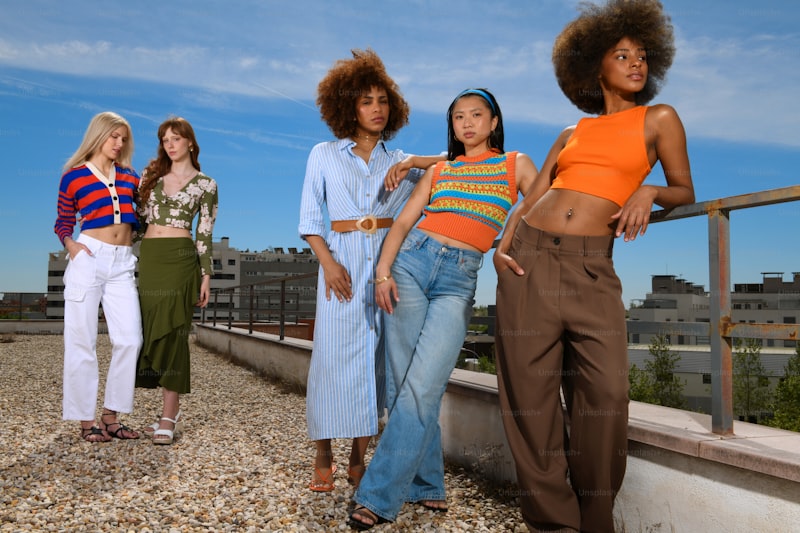Exploring the Second Dress Revolution: A Fashion Awakening
The Evolution of Fashion: Understanding the Second Dress Revolution
The fashion industry is no stranger to revolutions, and among them, the Second Dress Revolution stands out as a pivotal moment in the evolution of women's attire. This movement reshaped not just how women dress, but also how they perceive themselves within society. In this article, we'll delve into the intricacies of this revolution, its impact on fashion, and its societal implications.
What is the Second Dress Revolution?
The Second Dress Revolution refers to a transformative period in the late 20th and early 21st centuries, characterized by a shift towards more practical, versatile, and individual expressions of style in women's clothing. As women gained more rights and a strong foothold in the workforce, their clothing began to reflect a more modern lifestyle that emphasized comfort and function without sacrificing personal expression.
Historical Context: The Origins of the Second Dress Revolution
To fully understand the Second Dress Revolution, it's essential to look into the historical context surrounding it. The first dress revolution, which occurred in the 1920s, liberated women from corseted fashions and introduced more relaxed silhouettes, symbols of newfound freedom. Fast forward to the late 20th century; the Second Dress Revolution emerged in a time of significant societal changes, including:
- Feminist Movements: The waves of feminism that emerged in the 1960s and 1970s played a crucial role in empowering women to challenge traditional gender roles, including what they wore.
- The Rise of Casual Wear: The popularity of casual wear in the 1980s and 1990s further pushed the boundaries of formal dressing, making it permissible to wear comfortable clothing in various settings.
- Technological Advancements: Innovations in fabric technology allowed for the development of breathable, stretchable materials that cater to active lifestyles.
Key Features of the Second Dress Revolution
As the Second Dress Revolution unfolded, several key features became predominant:
| Feature | Description |
| Versatility | Clothing became multi-functional, suitable for both work and leisure, allowing women to transition seamlessly throughout their day. |
| Comfort | The emphasis shifted towards comfort; styles like athleisure emerged, proving that practical clothing can also be chic. |
| Individual Expression | Fashion became a means for self-expression, with a focus on personal style and unique aesthetics rather than following mainstream trends. |
The Impact of the Second Dress Revolution on Fashion
With the foundation of this revolution solidified, its impact rippled through various aspects of fashion:
1. New Designers and Brands
The Second Dress Revolution fostered the emergence of numerous designers and brands that prioritized comfort and personal expression. Labels like Victoria Beckham and Reformation are notable examples that cater to modern women seeking both elegance and convenience in their wardrobes.
2. Style Icons and Influencers
With the rise of social media, influencers began to play a significant role in shaping fashion trends. Icons such as Emma Watson and Rihanna champion styles that reflect the ideals of the Second Dress Revolution, promoting sustainability and inclusivity. Their influence showcases the shift away from traditionally constructed garments to more adaptable, stylish options.
3. The Role of Sustainability
Amidst this fashion revolution, sustainability has come to the forefront, prompting consumers to seek eco-friendly alternatives. The awareness surrounding the environmental impact of the fashion industry has led to a rise in sustainable practices, including:
- Recycling and Upcycling: Consumers are increasingly engaging in upcycling initiatives, transforming old garments into new wearable pieces.
- Ethical Brands: Many new brands prioritize ethical production processes, such as using organic materials and ensuring fair labor practices.

Frequently Asked Questions (FAQs) About the Second Dress Revolution
1. What inspired the Second Dress Revolution?
The Second Dress Revolution was largely inspired by the feminist movements throughout the late 20th century, challenging societal norms and pushing for more freedom in women’s expression, particularly through fashion.
2. How does the Second Dress Revolution differ from the first?
While the first dress revolution focused on liberating women from restrictive clothing, the Second Dress Revolution emphasizes practicality, versatility, and personal style that reflects modern-day living.
3. Who are the key influencers in the Second Dress Revolution?
Fashion icons like Michelle Obama, Solange Knowles, and Zendaya have utilized their platforms to advocate for individuality and comfort in fashion, embodying the tenets of the Second Dress Revolution.
Conclusion: Embracing Change in Fashion
The Second Dress Revolution represents more than just a shift in clothing; it embodies a significant transformation in societal attitudes towards gender roles, comfort, and personal expression. As we continue to embrace flexibility and identity within what we wear, it becomes crucial to remember the principles that underlie this revolution: authenticity, empowerment, and sustainability. The journey of fashion is ongoing, and as individuals, we have the power to shape it. Choose wisely, express your individuality, and contribute positively to the evolving narrative of fashion.
As we reflect on the Second Dress Revolution, it is vital to recognize that fashion is not just about trends but about making informed choices that resonate with our values and beliefs. Keep an eye on the advancements in sustainable fashion and always seek to express your unique persona through your style.